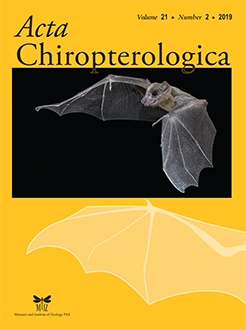The ability to accurately identify individuals is essential for both management and research of wild or captive animals. Marks need to be clear enough to be recovered, long-lived enough to provide useful information and not have health implications for the tagged animal which may affect survival. Substantial evidence suggests that more invasive, permanent marking techniques such as wing banding can cause injuries to bats, limiting the species with which such procedures can be used. Furthermore, low recovery rates can mean that the long term impacts of permanent marking on survival cannot be assessed. Here we present a new non-invasive, low cost approach to tag bats which can be carried out with the minimum of handling. Recovery of marks is simple and does not require handling. Our approach repurposes ‘queen bee markers’, small, coloured and numbered plastic disks which are commonly used to mark queen bees; instead they are affixed with superglue directly onto the fur of the bat. We carried out a pilot study at a large hibernaculum in West Poland, home to ca. 35,000 bats, the majority of which are Myotis myotis, the target species for this study. In November 2017 we marked 203 bats during a census of the underground fortification system. We recovered 30% of the originally marked bats over a time period of five months; 27% of the originally marked bats were identified to individual when resighted. Fifteen individuals were recovered in March that were not recovered in January, suggesting that they were either missed by recorders or were not present in the system during the census. Using the colour marking system allowed us to derive information about changes in bat behaviour when identification to individual was not possible, and individual identification revealed differences in hibernation strategies. We conclude that bee markers are an effective, cheap and less invasive approach for short term monitoring of bat populations and will also be useful to monitor whether recovery rates warrant the use of more invasive marking techniques.
How to translate text using browser tools
2 March 2020
Bee Markers: A Novel Method for Non-Invasive Short Term Marking of Bats
Lucinda Kirkpatrick,
Grzegorz Apoznański,
Luc De Bruyn,
Ralf Gyselings,
Tomasz Kokurewicz
ACCESS THE FULL ARTICLE

Acta Chiropterologica
Vol. 21 • No. 2
December 2019
Vol. 21 • No. 2
December 2019
Chiroptera
hibernation
non-invasive marking




